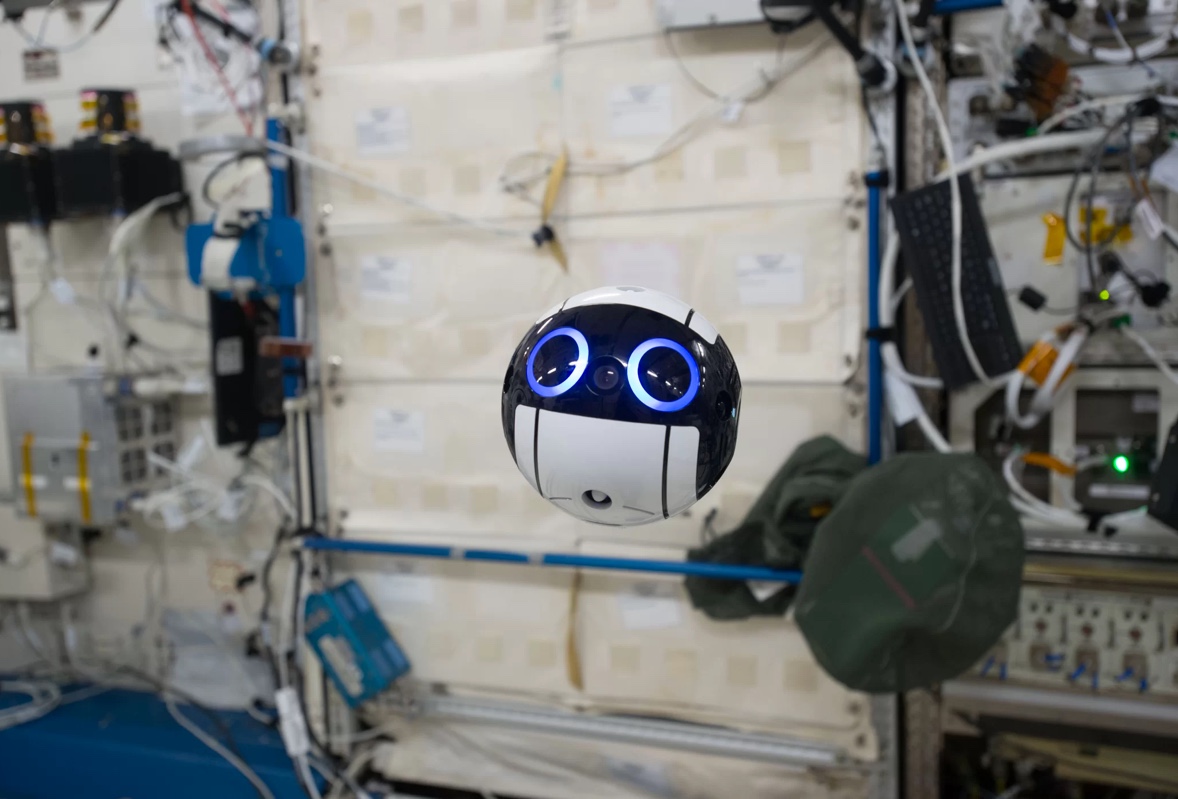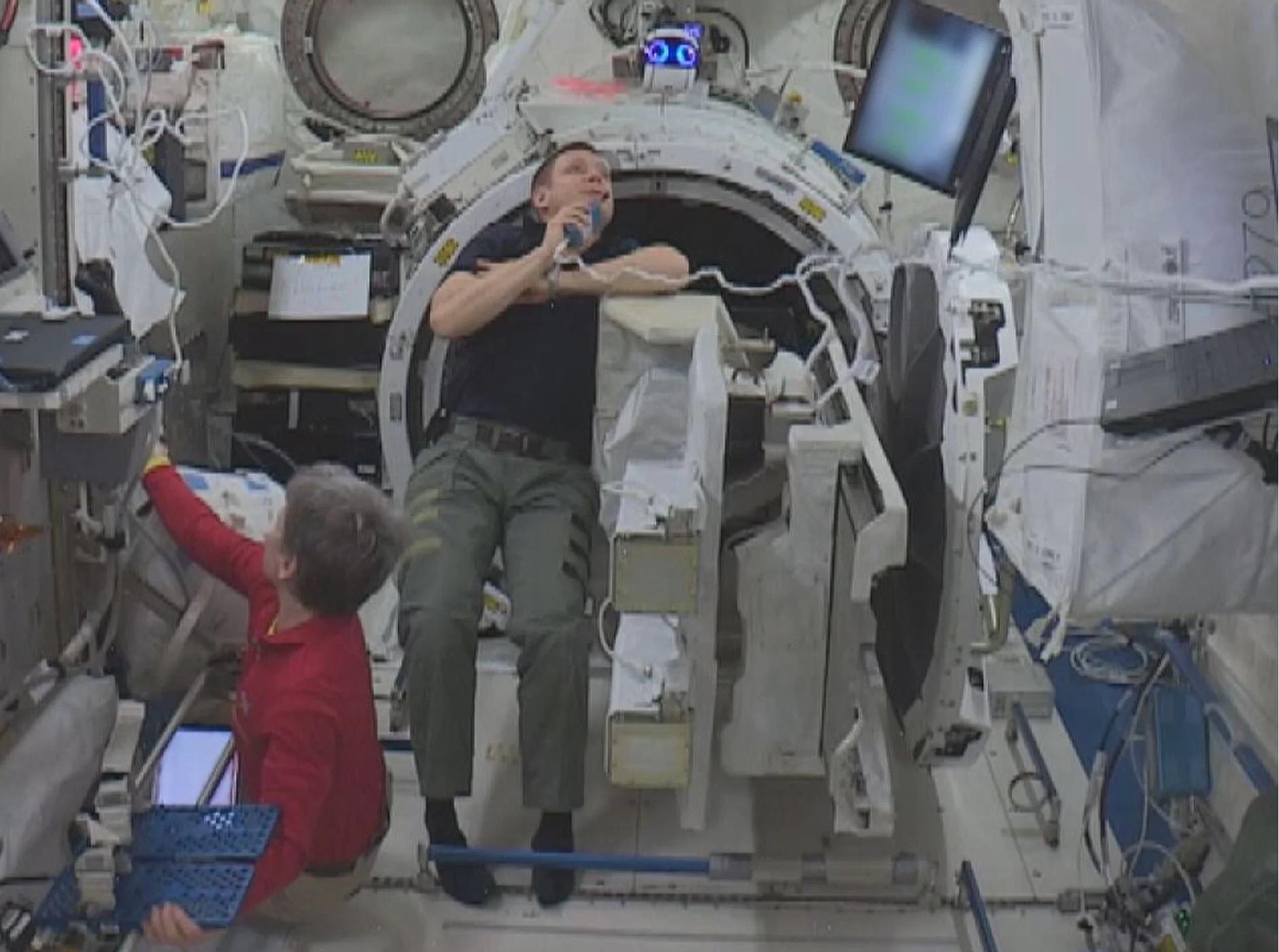BB-8 Flies? Adorable Japanese Drone Ball Tours Space Station

Space watchers have seen footballs, mini-soccer balls and water balls float through the International Space Station — but never a drone ball. Now, new footage of a spherical Japanese robot shows it hovering and skittering around the Destiny laboratory.
The hope is that the robot will not only save the crewmembers time today, but could also improve robotic-human cooperation in future space expeditions, according to a statement from the Japanese Aerospace Exploration Agency (JAXA).
"Int-Ball," as the drone is called, would add to a growing legacy of robot "helpers" in space, including NASA's Robonaut 2 (which can throw switches and may eventually do simple spacewalk tasks) and the adorable, talking Japanese Kirobo, which made small talk with astronaut Koichi Wakata in 2013.
Videos show Int-Ball, under the watchful eye of NASA astronaut Peggy Whitson, moving near the walls, taking pictures of experiments and other regions in its vicinity. One shot shows a laptop lazily floating by. In another clip, Peggy Whitson's fellow NASA astronaut Jack Fischer playfully hides behind a camera, taking pictures of the drone.
If the drone works out as planned, it could reduce or eliminate the time astronauts spend taking pictures, an activity that takes up about 10 percent of their working hours right now, JAXA officials said in the statement.

It also would let teams on the ground, where Int-Ball is controlled, look at the crew's work from the drone's viewpoint, JAXA added. "The effective cooperative work between in-space and on-the-ground [teams] will contribute to maximized results of 'Kibo' utilization experiments," the agency said, referring to the Japanese experiment module on the space station.
Int-Ball launched aboard SpaceX's Dragon spacecraft on the CRS-11 resupply mission June 3 and arrived at the space station June 5. It's now in testing to ensure that its images and video are recording information as planned, under control from the JAXA Tsukuba Space Center.
Sign up for the Live Science daily newsletter now
Get the world’s most fascinating discoveries delivered straight to your inbox.
JAXA added that Int-Ball's camera — which appears to be located between two "eyes" on the robot — uses technology that has already been tested on past drones. The ball's exterior and interior were fully 3D-printed on the ground.
Follow us @Spacedotcom, Facebook and Google+. Original article on Space.com.

Elizabeth Howell was staff reporter at Space.com between 2022 and 2024 and a regular contributor to Live Science and Space.com between 2012 and 2022. Elizabeth's reporting includes multiple exclusives with the White House, speaking several times with the International Space Station, witnessing five human spaceflight launches on two continents, flying parabolic, working inside a spacesuit, and participating in a simulated Mars mission. Her latest book, "Why Am I Taller?" (ECW Press, 2022) is co-written with astronaut Dave Williams.










